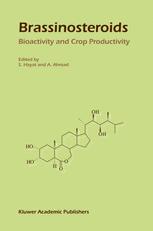

Most ebook files are in PDF format, so you can easily read them using various software such as Foxit Reader or directly on the Google Chrome browser.
Some ebook files are released by publishers in other formats such as .awz, .mobi, .epub, .fb2, etc. You may need to install specific software to read these formats on mobile/PC, such as Calibre.
Please read the tutorial at this link: https://ebookbell.com/faq
We offer FREE conversion to the popular formats you request; however, this may take some time. Therefore, right after payment, please email us, and we will try to provide the service as quickly as possible.
For some exceptional file formats or broken links (if any), please refrain from opening any disputes. Instead, email us first, and we will try to assist within a maximum of 6 hours.
EbookBell Team

0.0
0 reviewsThe entire range of the developmental processes in plants is regulated by the shift in the hormonal concentration, tissue sensitivity and their interaction with the factors operating around the plants. Out of the recognized hormones, attention has largely been focused on five (Auxins, Gibberellins, Cytokinin, Abscisic acid and Ethylene). However, in this book, the information about the most recent group of phytohormones (Brassinosteroids) has been compiled by us. It is a class of over 40 polyhydroxylated sterol derivatives, ubiquitously distributed throughout the plant kingdom. A large portion of these steroids is restricted to the reproductive organs (pollens and immature seeds). Moreover, their strong growth-inducing capacity, recognized as early as prior to their identification in 1979, tempted the scientists to visualize the practical importance of this group of phytohormones. The brassin solution, from rape pollen, was used in a collaborative project by the scientists of Brazil and U. S. A. in a p- sowing seed treatment to augment the yield. This was followed by large-scale scientific programmes in U. S. , Japan, China, Germany and erstwhile U. S. S. R. , after the isolation of the brassinosteroids. This approach suits best in today’s context where plants are targeted only as producers and hormones are employed to get desired results. Chapter 1 of this book (which embodies a total of 10 chapters), gives a comprehensive survey of the hitherto known brassinosteroids, isolated from lower and higher plants.